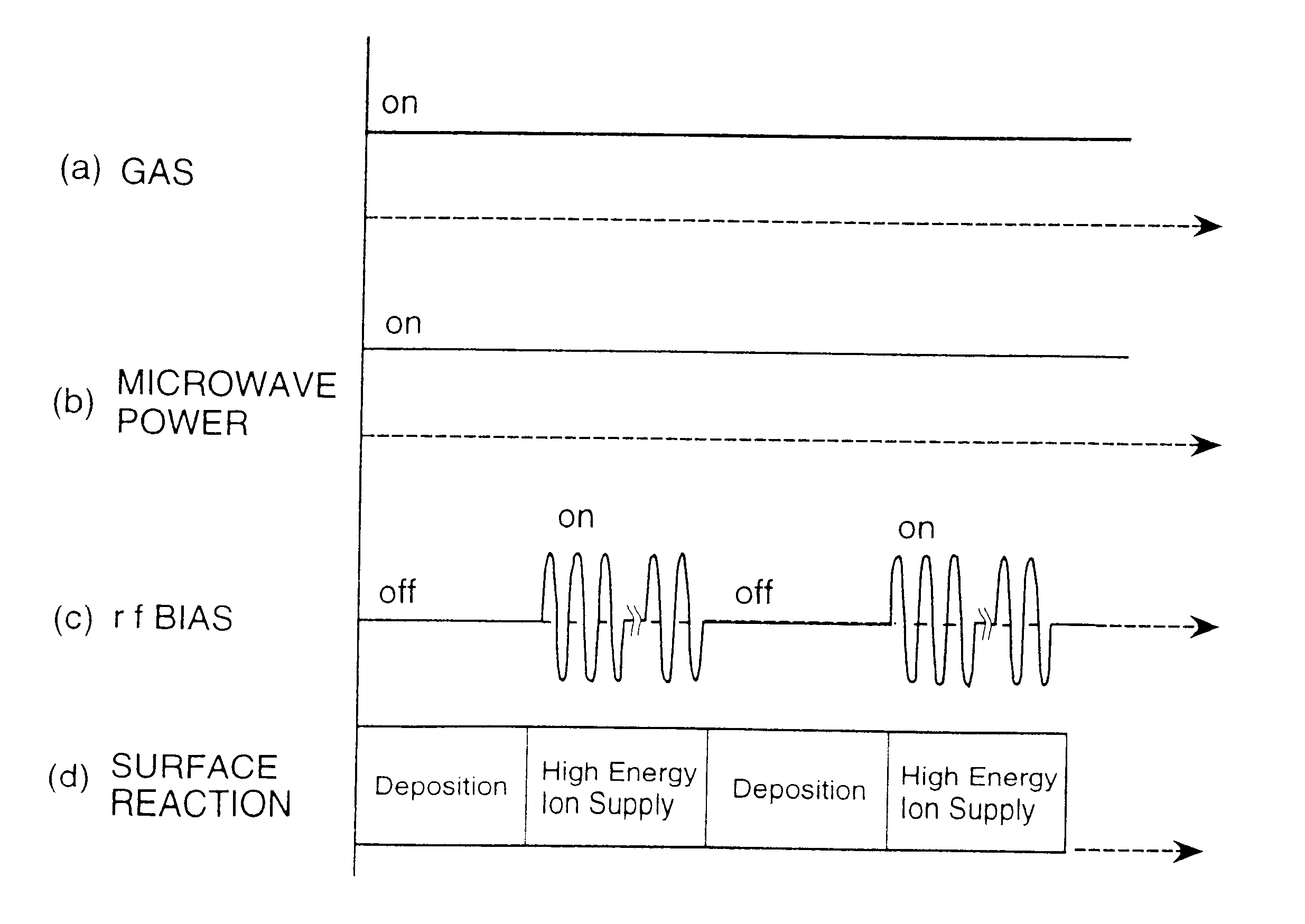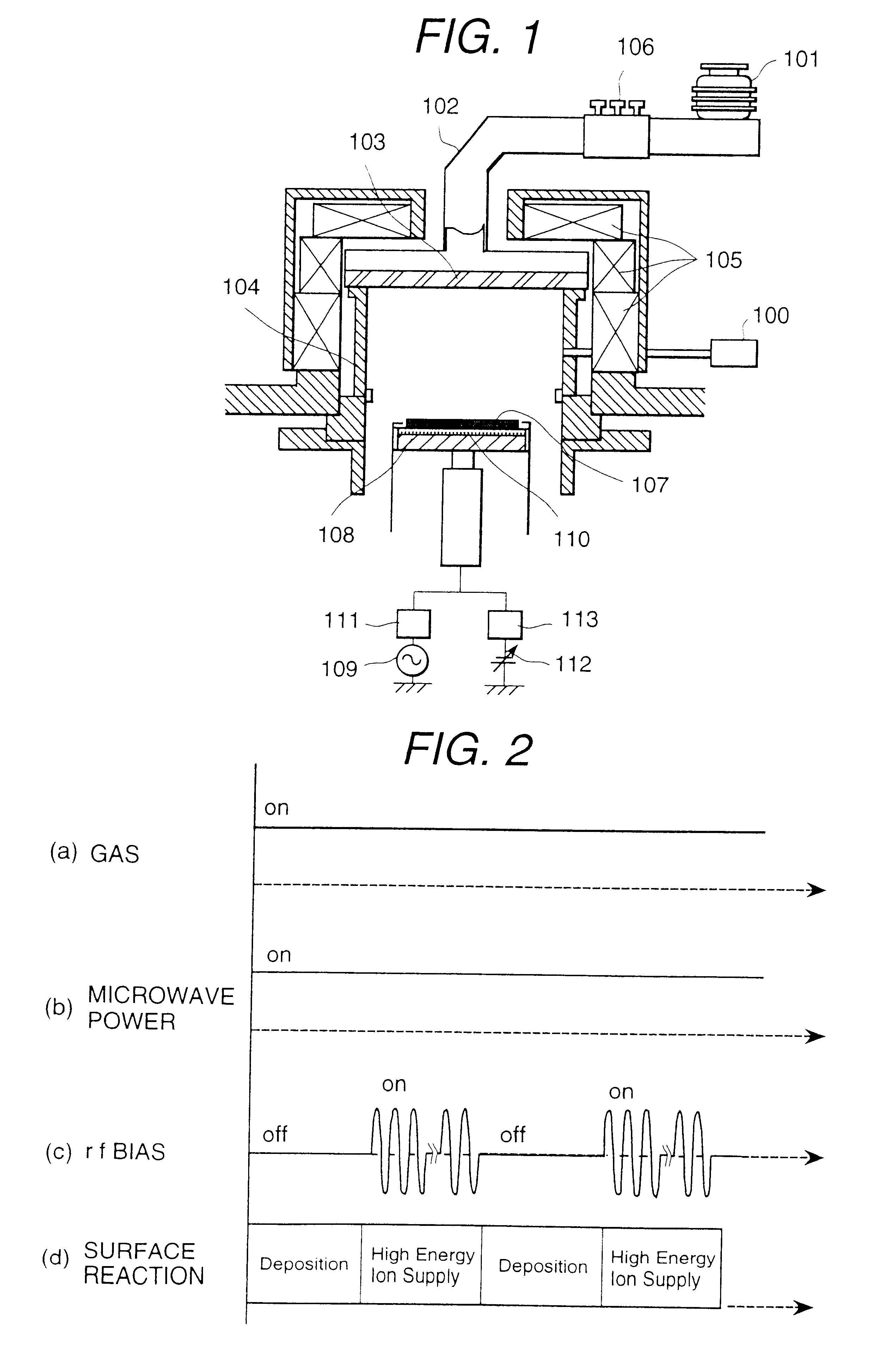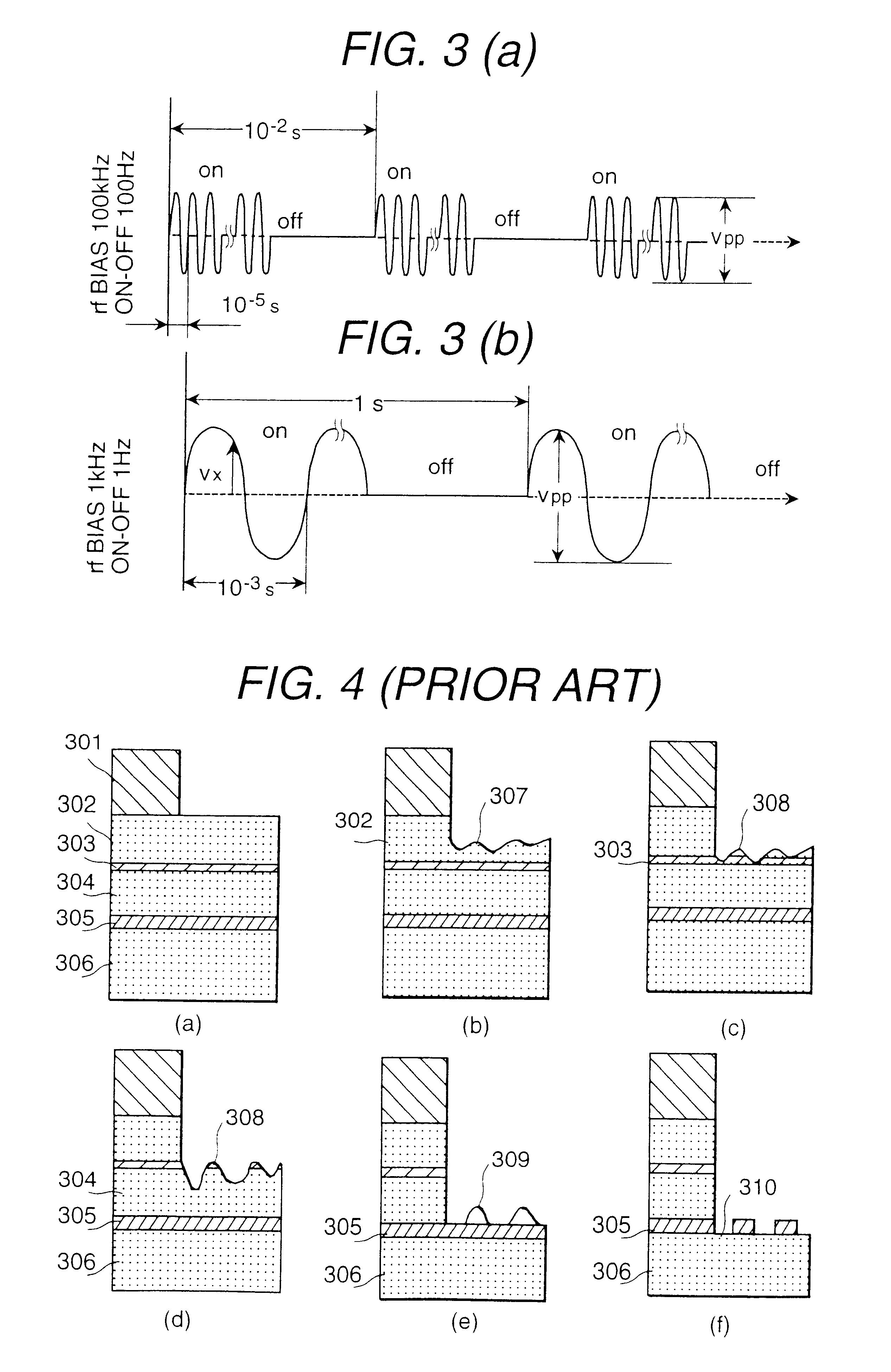Method for processing surface of sample
a technology of surface treatment and sample, which is applied in the direction of electrical discharge tubes, decorative arts, electrical equipment, etc., can solve the problems of high production cost, uneven etching surface, and difficulty in etching films with gate electrodes having different conductivities
- Summary
- Abstract
- Description
- Claims
- Application Information
AI Technical Summary
Benefits of technology
Problems solved by technology
Method used
Image
Examples
first embodiment
The first description relates to an example of etching a polysilicon metal gate. FIG. 4 shows the temporal change of the cross section of the sample provided with etching treatment according to the conventional method, using the system given in FIG. 1.
FIG. 5 shows the temporal change of the cross sectional profile of the sample processed under the etching conditions according to the present embodiment.
As shown in FIGS. 4(a) and 5(a), the sample in the initial state consists of a multilayer film comprising an oxide film 305, polycrystalline silicon 304, tungsten nitride 303 and tungsten 302 deposited on the silicon substrate 306, with a mask 301 processed to a desired pattern on the top layer. Gas used for etching in this case consists of 30 cc of chlorine and 15 cc of oxygen at a pressure of 0.2 Pa with 500 watts of microwave power at a sample temperature of 70 degrees Celsius.
The conventional example given in FIG. 4 represents the cross section of the sample when etching is perform...
second embodiment
The following describes an embodiment where etching process is divided into several steps in order to increase the effects of said Embodiment:
This embodiment is to get the optimum etching profile by changing the etching conditions at the time point when film type is switched, based on the intensity of light emitted from the plasma during etching or etching time.
Let us take an example of the sample having an architecture shown in FIG. 5. Upon completion of etching of the tungsten 302 and tungsten nitride 303, the condition is selected to allow polycrystalline silicon 304 to be etched to the oxide film 305 at a high selectivity. Namely, since etching of polycrystalline silicon 304 does not require as much ion energy as that in tungsten etching, the radio frequency voltage applied to the sample is reduced. Furthermore, oxygen to accelerates tungsten etching, but it controls etching of polycrystalline silicon, so measures are taken, for example, to select the step where the amount of ox...
third embodiment
The following describes an example of applying the present invention to the etching of the dual gate in comparison with the conventional method:
FIGS. 7(a) and 8(a) are initial cross sectional views representing a sample processed by a system given in FIG. 1. Oxide film 305, n-type polycrystalline silicon 313 and p-type polycrystalline silicon 314 are formed on the silicon substrate 306 of the sample, with a mask 301 processed to a desired pattern on the top layer. Gas used for etching consists of 55 cc of chlorine and 4 cc of oxygen at a pressure of 0.4 Pa with 400 watts of microwave power.
FIG. 7 shows the temporal change of the etching profile of the sample during continuous application of radio frequency voltage (power 35 W) according to the conventional method. A difference in etching depth 311 occurs between the p- and n-type silicons due to the difference of etching rate. This causes processing of n-type polycrystalline silicon 313 to be completed first, as shown in FIG. 7(c). ...
PUM
| Property | Measurement | Unit |
|---|---|---|
| frequency | aaaaa | aaaaa |
| frequency | aaaaa | aaaaa |
| radio frequency | aaaaa | aaaaa |
Abstract
Description
Claims
Application Information
 Login to View More
Login to View More - R&D
- Intellectual Property
- Life Sciences
- Materials
- Tech Scout
- Unparalleled Data Quality
- Higher Quality Content
- 60% Fewer Hallucinations
Browse by: Latest US Patents, China's latest patents, Technical Efficacy Thesaurus, Application Domain, Technology Topic, Popular Technical Reports.
© 2025 PatSnap. All rights reserved.Legal|Privacy policy|Modern Slavery Act Transparency Statement|Sitemap|About US| Contact US: help@patsnap.com



